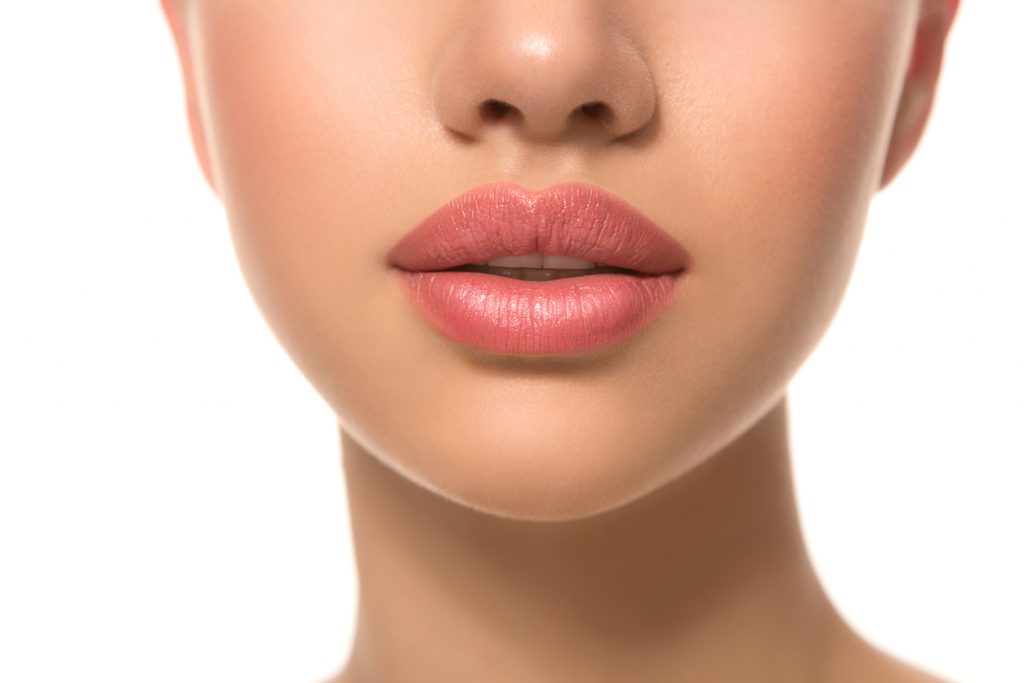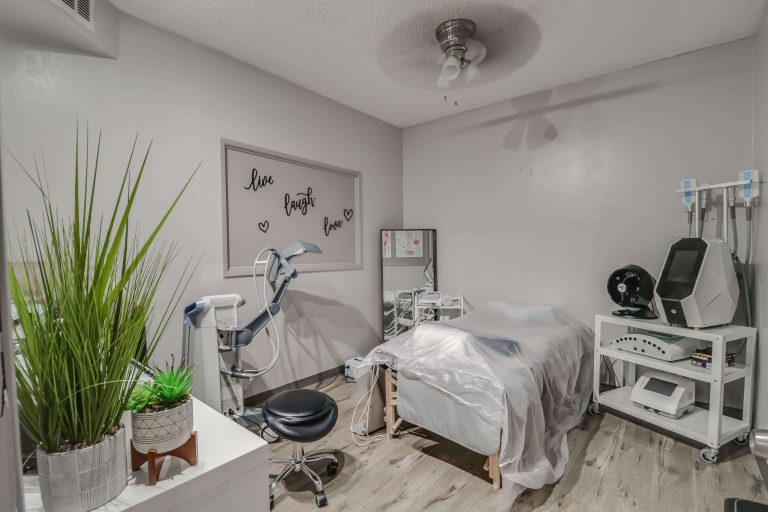Lip Filler Myths: Debunking Common Misconceptions About the Procedure
Posted on: March 3, 2024
Lip filler has emerged as a popular cosmetic treatment, offering individuals the chance to enhance their natural lip volume and shape. This procedure, utilizing substances like hyaluronic acid, not only promises fuller lips but also aims at balancing facial symmetry and reducing fine lines around the mouth area. With advancements in medical aesthetics, lip fillers have become safer and more accessible, providing subtle to dramatic enhancements tailored to individual preferences. As we delve into the world of lip fillers, understanding their types, benefits, potential risks, and aftercare is crucial for anyone considering this cosmetic solution.
Understanding Lip Fillers
Filler Basics
Lip fillers are popular for enhancing lips. They add volume and shape beautifully. The main ingredient is often hyaluronic acid. This substance is safe and effective.
Filler effects vary in duration. Some last six months, others more than a year. It depends on the type of filler used.
Professional Consultation
Consulting with a professional is key before getting lip injections. They assess your needs accurately. This ensures the treatment matches your desires perfectly.
Professionals also discuss potential risks and outcomes clearly. They help set realistic expectations for the procedure.
Tailored Treatment
Every individual has unique needs regarding lip enhancement. Professionals tailor treatments accordingly.
Options include different types of fillers and techniques. A thorough consultation helps find the best match for you.
- Hyaluronic acid-based fillers
- Technique variations based on desired outcome
Tailoring treatment ensures satisfaction with results.
Debunking Lip Filler Myths
Natural Results
Lip fillers, when administered by a skilled professional, often lead to natural-looking enhancements. The myth that lip fillers always result in an overdone “duck lips” appearance is widespread. However, the reality is quite different.
The key lies in the technique and the product used. Hyaluronic acid fillers are most common and can be adjusted or dissolved with hyaluronidase, allowing for corrections if necessary. This flexibility means that achieving a subtle enhancement is entirely possible.
For Everyone
Contrary to popular belief, lip fillers are not just for women seeking fuller lips. Men also opt for this cosmetic treatment to enhance their features subtly.
This trend highlights how beauty standards evolve and become more inclusive. Both men and women seek treatments like lip fillers to feel confident in their skin.
Allergy Risks
One of the biggest myths surrounding lip fillers involves allergic reactions. Thanks to advancements in cosmetic medicine, most lip fillers now use biocompatible materials like hyaluronic acid which significantly reduces the risk of allergies.
It’s rare for patients to experience severe allergic reactions due to these improvements. Pre-treatment tests further minimize risks, ensuring safety during procedures.
Safety and Risks of Lip Fillers
Common Side Effects
Lip fillers often lead to some temporary discomfort. Swelling, bruising, and redness are typical after the procedure. These symptoms usually last a few days.
Patients should expect these minor side effects as part of the healing process. Applying ice can help reduce swelling and discomfort.
Serious Complications
While rare, serious complications can arise from lip filler procedures. Improper technique or lack of aftercare can lead to infections or even tissue damage.
It’s crucial for patients to follow their practitioner’s advice closely post-procedure. This minimizes the risk of severe complications significantly.
Choosing a Practitioner
The importance of selecting a qualified practitioner cannot be overstated. A skilled professional knows how to minimize risks effectively.
Here are two key tips for finding the right practitioner:
- Look for certifications in cosmetic procedures.
- Read reviews from previous patients.
Choosing someone experienced reduces the chances of experiencing adverse effects greatly.
Types and Brands of Lip Fillers
Hyaluronic Acid Fillers
Hyaluronic acid-based fillers are the go-to for many. They mimic a substance naturally found in our bodies. This makes them safe and gives lips a natural feel. Their reversibility is also key. If results are not as expected, an enzyme can dissolve the filler.
Brands like Juvederm and Restylane lead this category. Each offers various formulations to target specific needs, from adding volume to enhancing lip shape.

Brand Options
Juvederm provides several options for lip enhancement. For example, Juvederm Ultra XC adds fullness while Volbella XC targets fine lines around the mouth without adding too much volume.
Restylane, on the other hand, has products like Restylane Silk designed specifically for lips. It focuses on both shape and definition for a subtle yet effective result.
Some fillers prioritize longevity, lasting up to a year or more before needing touch-ups. Others focus on flexibility and movement for a more natural look during speech or expressions. Choosing between these depends on personal preferences and desired outcomes.
Procedure and Administration Explained
Initial Consultation
Before the procedure, an initial consultation is crucial. Here, you discuss your goals with the provider. They will evaluate your lip anatomy too.
This step ensures that both you and the provider understand what results you’re aiming for. It’s about making an informed decision together.
Procedure Duration
The procedure usually takes less than an hour to complete. Most people find that there’s minimal downtime needed afterward.
You can often return to your daily activities quickly. This makes lip filler a convenient option for many.
Techniques Varied
The techniques used during the procedure vary widely. They depend on two main factors:
- Desired outcome
- Type of filler chosen
Providers tailor their approach based on these aspects to achieve optimal results. Whether you’re looking for subtle enhancement or more dramatic changes, there are techniques designed to meet different needs.
Managing Pain and Discomfort
Numbing Cream
Before the lip filler procedure, a topical numbing cream is applied to the area. This step is crucial for minimizing pain during the injection process. The cream works by temporarily numbing the skin, making patients more comfortable.
The application of this cream ensures that the needle’s entry causes minimal discomfort. Patients often report feeling only a slight pressure or stretch in their lips rather than sharp pain.
Ice Packs
After receiving lip fillers, using ice packs can significantly reduce swelling and discomfort. It’s a simple yet effective way to manage post-procedure sensations.
Applying ice helps lessen both swelling and bruising around the injection site. However, it’s essential to wrap the ice pack in cloth to avoid direct contact with sensitive skin.
Pain Monitoring
Experiencing mild pain after getting lip fillers is normal. But severe pain could indicate complications like infection or improper technique used by injectors.
Patients should monitor their discomfort levels closely and reach out to their doctor if they experience intense pain or other concerns. An experienced injector will provide guidance on what sensations are typical versus signs of potential issues.
- Mild discomfort: Normal part of healing process.
- Severe pain: Could signal an infection; immediate consultation needed.
Longevity and Effectiveness of Results
Immediate Effects
Lip filler results are visible right away. However, the final look shows up after a few days. This is because swelling needs to go down first.
Patients see their lips become fuller and more defined immediately after treatment. The true aesthetics of the procedure emerge once any initial swelling subsides, usually within a week or two. This delay allows for a more accurate assessment of the size and shape achieved through the fillers.
Lifestyle Impact
Certain habits can shorten how long lip fillers last. Smoking is one such factor that affects longevity negatively.
The effects of lip fillers can be diminished by lifestyle choices such as smoking, which accelerates the breakdown of hyaluronic acid in fillers. Regular touch-ups are often needed to maintain volume and shape over time. These follow-up treatments help keep lips looking their best and preserve a youthful appearance for longer periods.
Maintenance Tips
Regular touch-ups help sustain desired outcomes from lip filler treatments. They ensure consistency in volume and aesthetic appeal over time.
To maximize longevity:
- Avoid smoking.
- Stay hydrated.
- Follow post-treatment care instructions carefully.
Touch-ups might be scheduled every 6 to 12 months depending on individual factors like metabolism rate, lifestyle, and amount used during initial treatment sessions. These regular appointments allow practitioners to adjust size or add more product as needed, ensuring clients always have their ideal look.
Reversibility and Corrections
Dissolving Fillers
Hyaluronic acid (HA) fillers offer a unique advantage. They can be dissolved. This is done using an enzyme called hyaluronidase. Many people find comfort in knowing this fact.
If someone is not happy with their lip filler result, they have options. A quick procedure can reverse the effects almost entirely. This flexibility makes HA fillers a popular choice among those seeking to enhance their facial features.
Adjustments Needed
Sometimes, after getting lip fillers, adjustments are necessary. Reasons vary from asymmetry to simply not liking how it looks. Everyone’s face and expectations are different.
Corrections are part of the process for some individuals. It’s okay to need or want changes after seeing the initial results on your face.
- Pros: Flexibility, personalized results.
- Cons: Additional appointments may be required.
Lip fillers give volume and shape but sometimes require fine-tuning. The truth is that achieving perfect symmetry or satisfaction might take more than one try. That’s normal and expected with any cosmetic procedure aimed at enhancing one’s appearance.
Final Remarks
Lip fillers offer a dynamic solution for enhancing facial aesthetics, providing individuals with the opportunity to achieve their desired lip volume and shape. This article has explored various aspects of lip fillers, from debunking common myths to understanding their safety, types, and procedural intricacies. It emphasizes that while lip fillers present a viable option for cosmetic enhancement, they require careful consideration of risks, types available, and the expertise of the administering professional. The decision to undergo lip filler treatment should be informed by thorough research and consultation with qualified practitioners.
For those contemplating lip fillers, it’s crucial to weigh the benefits against potential risks and to have realistic expectations about outcomes and longevity. Engaging with experienced professionals who can offer personalized advice based on individual needs and conditions is paramount. Readers are encouraged to continue exploring this topic through reputable sources and to seek consultations with certified experts in the field of cosmetic procedures.
Frequently Asked Questions
What are lip fillers?
Lip fillers are substances injected into the lips to enhance volume and shape. Commonly, they contain hyaluronic acid.
Can lip fillers be reversed?
Yes, certain types of lip fillers can be dissolved using an enzyme called hyaluronidase, allowing for corrections or reversibility.
How long do lip filler results last?
Typically, the effects of lip fillers last between 6 to 18 months, depending on the type of filler used and individual metabolism rates.
Are there any risks associated with lip fillers?
While generally safe when administered by a qualified professional, risks include swelling, bruising, infection, and asymmetry.
What should I expect during the procedure?
The procedure involves injecting the chosen filler into specific areas of the lips. Topical numbing cream may be applied beforehand to manage discomfort.
How can I manage pain after getting lip fillers?
Pain and discomfort can usually be managed with ice packs and over-the-counter pain relief medication as advised by your practitioner.
Is there a difference between types of lip fillers?
Yes. Different brands and types offer varying levels of viscosity and longevity. Hyaluronic acid-based fillers are most common due to their natural appearance and reversible nature.





